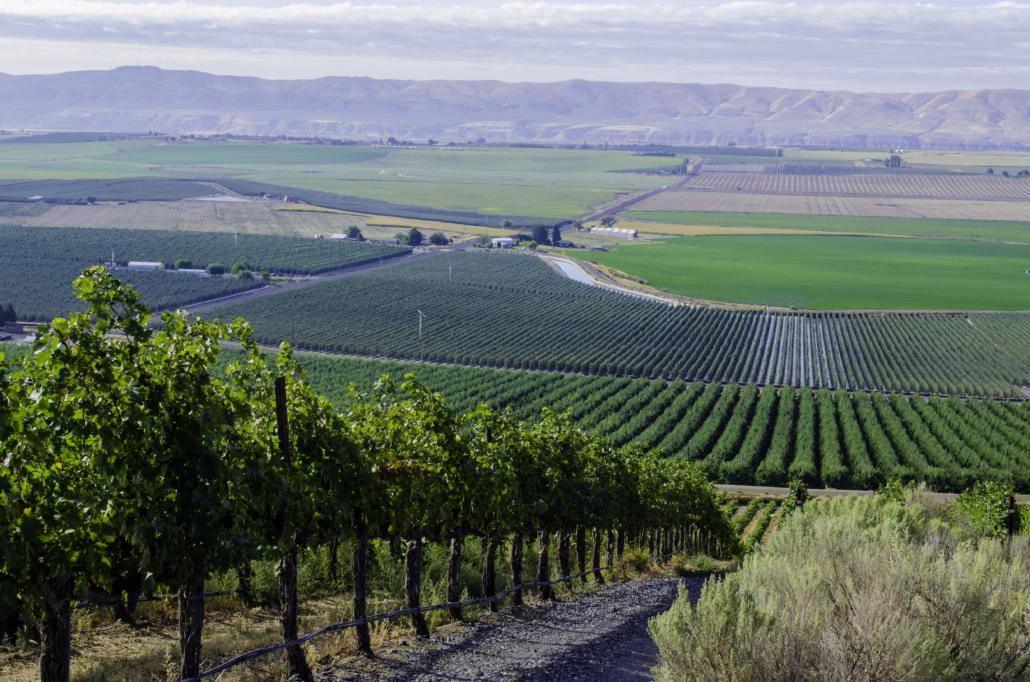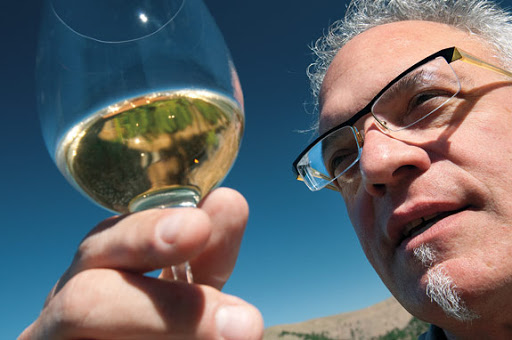Royal Slope named Washington’s newest American Viticultural Area
Washington now has 15 AVAs defined by variation in elevation, slopes and aspect

Stillwater Creek Vineyard near Royal City, WA., is among the many vineyards in the new Royal Slope AVA that has been producing top quality wine grapes for many years.
Royal Slope is the newest American Viticultural Area (AVA) in Washington. The Alcohol and Tobacco Tax and Trade Bureau (TTB) published the final rule for Royal Slope on Wednesday, Sept. 2, to officially define it as a designated wine grape-growing region.
“Many of our wineries and grape growers have been championing the terroir of Royal Slope for a long time, so it’s thrilling for them to be able to put an official AVA name on the bottle,” said Steve Warner, president of the Washington State Wine Commission.
To qualify as an AVA, a wine grape-growing region must be distinguishable by features such as climate, soil, elevation and physical features. One month after the final rule is published, wineries may submit a Certificate of Label Approval (COLA) request to the TTB for a label using the AVA name as an appellation of origin.
The Royal Slope AVA is a total 156,389 acres, wholly within the Columbia Valley AVA. It is located just to the south of the Ancient Lakes AVA, and to the north of the Wahluke Slope AVA. The area encompasses Frenchman Hills, a 30-mile long east-west trending ridge with a gentle to medium-steep south-facing slope. There are more than 1,900 acres of wine grapes currently planted within the AVA, producing more than 20 varieties. The majority of the area’s soils are formed of windblown silts or ‘loess.’

Dr. Alan Busacca, known in Washington wine circles as Doctor Dirt, co-wrote the petition that created the new Royal Slope AVA with soil scientist Dr. Richard Rupp of Washington State University.
“The AVA is something of an island geographically that is surrounded on all four sides by very different lands,” explained Alan Busacca PhD, who co-wrote the AVA petition with Richard Rupp PhD. “North of the AVA are generally flat lands of the Quincy Valley with soils on shifting dune sands. To the east and south of the AVA, the landscape falls away into the harsh, basalt bedrock-dominated cliffs of Crab Creek Coulee gouged out by Missoula Floods, and on the west, the bedrock cliffs fall away steeply to the Columbia River.”
In addition to its geographical location, Busacca names some of the defining characteristics of the Royal Slope AVA as follows:
- The AVA area has about 90% gently to somewhat steeply south-facing slopes, highly regarded for wine grapes in the Pacific Northwest because of the northerly latitude.
- The average elevation of vineyards in the Royal Slope AVA is about 1,300 feet, compared to the Wahluke Slope AVA just 15 miles to the south, which is at about 600 feet. This elevation difference leads to cooler nighttime temperatures and slightly lower daytime temperatures than lower, warmer areas.
“The area of the AVA is large enough that the variation in soils, slopes and aspect allows for a wide range of grape varieties to be matched to specific sites, soils, and training methods, producing wine grapes of exceptional quality and distinction,” Busacca said. “In a short period of time, vineyards like Stillwater Creek, Lawrence, Frenchman Hills and more have been producing wines that are absolutely rocking people’s worlds. Royal Slope has jumped onto the wine map very quickly based on exceptional fruit character and quality.”
About the Washington State Wine Commission:
The Washington State Wine Commission (WSWC) represents every licensed winery and wine grape grower in Washington State. Guided by an appointed board, WSWC provides a marketing platform to raise positive awareness about the Washington wine industry and generate greater demand for its wines. Funded almost entirely by the industry through assessments based on grape and wine sales, WSWC is a state government agency, established by the legislature in 1987. To learn more, visit www.washingtonwine.org.



